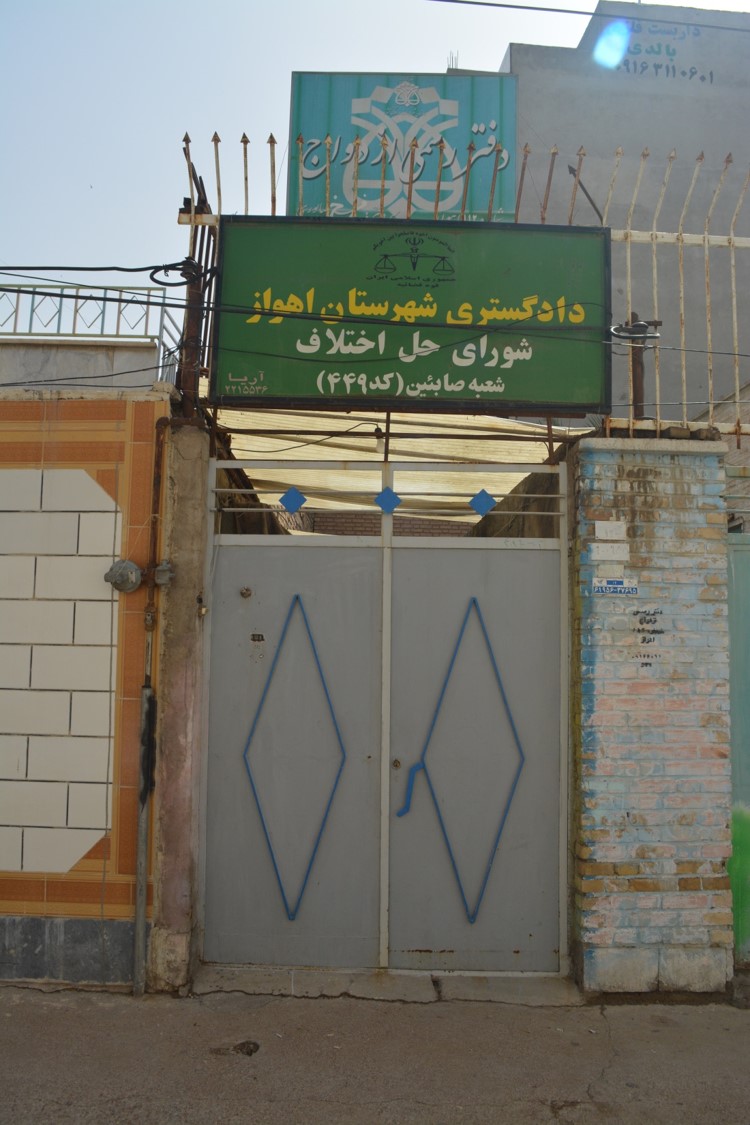|
Sabians
The Sabians, sometimes also spelled Sabaeans or Sabeans, are a religious group mentioned three times in the Quran (as , in later sources ), where it is implied that they belonged to the 'People of the Book' (). Their original identity, which seems to have been forgotten at an early date, has been called an "unsolved Quranic problem". Modern scholars have variously identified them as Mandaeism, Mandaeans, Manichaeans, Sabaeans, Elchasaites, Archontics, Hanif, (either as a type of Gnostics or as "sectarians"), or as adherents of the astral religion of Harran. Some scholars believe that it is impossible to establish their original identity with any degree of certainty. At least from the ninth century on, the Quranic epithet 'Sabian' was claimed by various religious groups who sought recognition by the Muslim authorities as a People of the Book deserving of legal protection (). Among those are the Sabians of Harran, adherents of a poorly understood ancient Semitic religion center ... [...More Info...] [...Related Items...] OR: [Wikipedia] [Google] [Baidu] |
Mandaeans
Mandaeans (Mandaic language, Mandaic: ࡌࡀࡍࡃࡀࡉࡉࡀ) ( ), also known as Mandaean Sabians ( ) or simply as Sabians ( ), are an ethnoreligious group who are followers of Mandaeism. They believe that John the Baptist was the final and most important prophet. They may have been among the earliest religious groups to practice baptism, as well as among the earliest adherents of Gnosticism, a belief system of which they are the last surviving representatives today. The Mandaeans were originally native speakers of Mandaic language, Mandaic, an Eastern Aramaic languages, Eastern Aramaic language, before they nearly all switched to Mesopotamian Arabic or Persian language, Persian as their main language. After 2003 invasion of Iraq, the invasion of Iraq by the United States and Multi-National Force – Iraq, its allies in 2003, the Mandaean community of Iraq, which before the war numbered 60,000–70,000 persons, collapsed with most of the community relocating to Iran, Syria ... [...More Info...] [...Related Items...] OR: [Wikipedia] [Google] [Baidu] |
Mandaeism
Mandaeism (Mandaic language, Classical Mandaic: ),https://qadaha.wordpress.com/wp-content/uploads/2021/03/nhura-dictionary-mandaic-english-mandaic.pdf sometimes also known as Nasoraeanism or Sabianism, is a Gnosticism, Gnostic, Monotheism, monotheistic and ethnic religion with Ancient Greek religion, Greek, Iranian religions, Iranian, and Judaism, Jewish influences. Its adherents, the Mandaeans, revere Adam#In Mandaeism, Adam, Abel#Mandaean interpretation, Abel, Seth#Mandaeism, Seth, Enos (biblical figure)#In Mandaeism, Enos, Noah#Mandaeism, Noah, Shem#In Mandaeism, Shem, Aram, son of Shem, Aram, and especially John the Baptist#Mandaeism, John the Baptist. Mandaeans consider Adam, Seth, Noah, Shem, and John the Baptist prophets, with Adam being the founder of the religion and John being the greatest and Last prophet, final prophet. The Mandaeans speak an Eastern Aramaic languages, Eastern Aramaic language known as Mandaic language, Mandaic. The name 'Mandaean' comes from th ... [...More Info...] [...Related Items...] OR: [Wikipedia] [Google] [Baidu] |
Star Worship
The worship of heavenly bodies is the veneration of stars (individually or together as the night sky), the planets, or other astronomical objects as deities, or the association of deities with heavenly bodies. In anthropological literature these systems of practice may be referred to as astral cults. The most notable instances of this are Sun gods and Moon gods in polytheistic systems worldwide. Also notable are the associations of the planets with deities in Sumerian religion, and hence in Babylonian religion, Babylonian and Ancient Greek religion, Greco-Religion in ancient Rome, Roman religion, viz. Mercury (mythology), Mercury, Venus (mythology), Venus, Mars (mythology), Mars, Jupiter (mythology), Jupiter, and Saturn (mythology), Saturn. Gods, goddesses, and demons may also be considered personifications of astronomical phenomena such as lunar eclipses, planetary alignments, and apparent interactions of planetary bodies with stars. The Sabians of Harran, a poorly understood p ... [...More Info...] [...Related Items...] OR: [Wikipedia] [Google] [Baidu] |
People Of The Book
People of the Book, or ''Ahl al-Kitāb'' (), is a classification in Islam for the adherents of those religions that are regarded by Muslims as having received a divine revelation from Allah, generally in the form of a holy scripture. The classification chiefly refers to pre-Islamic Abrahamic religions. In the Quran, they are identified as the Jews, the Christians, the Sabians, and—according to some interpretations—the Zoroastrians. Beginning in the 8th century, this recognition was extended to other groups, such as the Samaritans (who are closely related to the Jews),. and, controversially, Hindus, Buddhists, Jains, and Sikhs, among others. In most applications, "People of the Book" is simply used by Muslims to refer to the followers of Judaism and Christianity, with which Islam shares many values, guidelines, and principles. Historically, in countries and regions following Islamic law, the religious communities that Muslims recognized as People of the Book were subject ... [...More Info...] [...Related Items...] OR: [Wikipedia] [Google] [Baidu] |
Al-Battani
Al-Battani (before 858929), archaically Latinized as Albategnius, was a Muslim astronomer, astrologer, geographer and mathematician, who lived and worked for most of his life at Raqqa, now in Syria. He is considered to be the greatest and most famous of the astronomers of the medieval Islamic world. Al-Battānī's writings became instrumental in the development of science and astronomy in the west. His (), is the earliest extant (astronomical table) made in the Ptolemaic tradition that is hardly influenced by Hindu or Sasanian astronomy. Al-Battānī refined and corrected Ptolemy's ''Almagest'', but also included new ideas and astronomical tables of his own. A handwritten Latin version by the Italian astronomer Plato Tiburtinus was produced between 1134 and 1138, through which medieval astronomers became familiar with al-Battānī. In 1537, a Latin translation of the was printed in Nuremberg. An annotated version, also in Latin, published in three separate volumes betwee ... [...More Info...] [...Related Items...] OR: [Wikipedia] [Google] [Baidu] |
Harran
Harran is a municipality and Districts of Turkey, district of Şanlıurfa Province, Turkey. Its area is 904 km2, and its population is 96,072 (2022). It is approximately southeast of Urfa and from the Syrian border crossing at Akçakale. Harran was founded at some point between the 25th and 20th centuries BC, possibly as a merchant colony by Sumerian traders from Ur. Over the course of its early history, Harran rapidly grew into a major Mesopotamian cultural, commercial and religious center. It was made a religiously and politically influential city through its association with the moon-god Sin (mythology), Sin; many prominent Mesopotamian rulers consulted with and renovated the moon-temple of Ekhulkhul in Harran. Harran came under Assyrian rule under Adad-nirari I ( BC) and became a provincial capital often second in importance only to the Assyrian capital of Assur itself. During the collapse of the Assyrian Empire, Harran briefly served as the final capital of ... [...More Info...] [...Related Items...] OR: [Wikipedia] [Google] [Baidu] |
Elchasaites
The Elcesaites, Elkasaites, Elkesaites or Elchasaites were an ancient Jewish Christian sect in Lower Mesopotamia, then the province of Asoristan in the Sasanian Empire that was active between 100 and 400 CE. The members of this sect, which originated in the Transjordan, performed frequent baptisms for purification and had a Gnostic orientation. The name of the sect derives from the alleged founder, Elkhasaí ( in Hippolytus), Elksai ( in Epiphanius), or Elkesai ( in Eusebius, and Theodoret). Patristic testimony The sect is directly mentioned only in the commentaries on "heresies" by Early Church Fathers. Hippolytus () Hippolytus of Rome ('' Refutation of All Heresies'', IX, 8–13) records that in the time of Pope Callixtus I (217–222 AD), a Jewish Christian called Alcibiades of Apamea came to Rome, bringing a book which he said had been received in Parthia by a just man named Elchasai. According to Alcibiades, the book had been revealed by an angel high (337,920 cubit ... [...More Info...] [...Related Items...] OR: [Wikipedia] [Google] [Baidu] |
Monotheistic
Monotheism is the belief that one God is the only, or at least the dominant deity.F. L. Cross, Cross, F.L.; Livingstone, E.A., eds. (1974). "Monotheism". The Oxford Dictionary of the Christian Church (2 ed.). Oxford: Oxford University Press. A distinction may be made between exclusive monotheism, in which the one God is a singular existence, and both inclusive and pluriform monotheism, in which multiple gods or godly forms are recognized, but each are postulated as extensions of the same God. Monotheism is distinguished from henotheism, a religious system in which the believer worships one god without denying that others may worship different gods with equal validity, and monolatry, monolatrism, the recognition of the existence of many gods but with the consistent worship of only one deity. The term ''monolatry'' was perhaps first used by Julius Wellhausen. Monotheism characterizes the traditions of Abrahamic religions, Abrahamic religions such as Judaism, Samaritanism, Christi ... [...More Info...] [...Related Items...] OR: [Wikipedia] [Google] [Baidu] |
Gnostics
Gnosticism (from Ancient Greek: , romanized: ''gnōstikós'', Koine Greek: �nostiˈkos 'having knowledge') is a collection of religious ideas and systems that coalesced in the late 1st century AD among early Christian sects. These diverse groups emphasized personal spiritual knowledge ('' gnosis'') above the proto-orthodox teachings, traditions, and authority of religious institutions. Generally, in Gnosticism, the Monad is the supreme God who emanates divine beings; one, Sophia, creates the flawed demiurge who makes the material world, trapping souls until they regain divine knowledge. Consequently, Gnostics considered material existence flawed or evil, and held the principal element of salvation to be direct knowledge of the hidden divinity, attained via mystical or esoteric insight. Many Gnostic texts deal not in concepts of sin and repentance, but with illusion and enlightenment. Gnosticism likely originated in the late first and early second centuries around Alex ... [...More Info...] [...Related Items...] OR: [Wikipedia] [Google] [Baidu] |
Dhimma
' ( ', , collectively ''/'' "the people of the covenant") or () is a historical term for non-Muslims living in an Islamic state with legal protection. The word literally means "protected person", referring to the state's obligation under ''sharia'' to protect the individual's life, property, as well as freedom of religion, in exchange for loyalty to the state and payment of the ''jizya'' tax, in contrast to the ''zakat'', or obligatory alms, paid by the Muslim subjects. ''Dhimmi'' were exempt from military service and other duties assigned specifically to Muslims if they paid the poll tax (''jizya'') but were otherwise equal under the laws of property, contract, and obligation. Dhimmis were subject to specific restrictions as well, which were codified in agreements like the ''Pact of ʿUmar''. These included prohibitions on building new places of worship, repairing existing ones in areas where Muslims lived, teaching children the Qurʾān, and preventing relatives from convert ... [...More Info...] [...Related Items...] OR: [Wikipedia] [Google] [Baidu] |
John The Baptist
John the Baptist ( – ) was a Jewish preacher active in the area of the Jordan River in the early first century AD. He is also known as Saint John the Forerunner in Eastern Orthodoxy and Oriental Orthodoxy, John the Immerser in some Baptist Christianity, Christian traditions, and as the prophet Yahya ibn Zakariya in Islam. He is sometimes referred to as John the Baptiser. John is mentioned by the History of the Jews in the Roman Empire, Roman Jewish historian Josephus, and he is revered as a major religious figure in Christianity, Islam, the Baháʼí Faith, the Druze faith, and Mandaeism; in the last of these he is considered to be the final and most vital prophet. He is considered to be a prophet of God in Abrahamic religions, God by all of the aforementioned faiths, and is honoured as a saint in many Christian denominations. According to the New Testament, John anticipated a messianic figure greater than himself; in the Gospels, he is portrayed as the precursor or forerunn ... [...More Info...] [...Related Items...] OR: [Wikipedia] [Google] [Baidu] |






